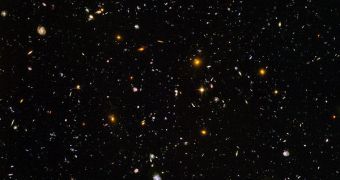Beneath the planet's surface, there lies a wealth of mineral diversity, with materials featuring elements that are extremely rare to come by and that cannot be found inside the crust. For a very long time, geologists have been puzzled by how these chemicals came to exist on the Earth, when geological records pointed at no reason why they should have appeared. Now, some scientists turn their fingers to the sky, and propose that the minerals were brought here by comets and asteroids, and then infiltrated the crust.
“The extreme temperature at which the Earth's core formed more than four billion years ago would have completely stripped any precious metals from the rocky crust and deposited them in the core,” University of Toronto Department of Geology expert James Brenan says. He is also the co-author of a new study detailing the finds, published in the October 18 issue of the respected scientific journal Nature Geoscience. Experts from the University of Maryland also took part in the investigation.
“So, the next question is why are there detectable, even mineable, concentrations of precious metals such as platinum and rhodium in the rock portion of the Earth today? Our results indicate that they could not have ended up there by any known internal process, and instead must have been added back, likely by a 'rain' of extraterrestrial debris, such as comets and meteorites,” the scientist adds. Funding for the research was provided by the Natural Sciences and Engineering Research Council (NSERC) of Canada, and the NASA Cosmochemistry grant.
Some 4.5 billion years ago, experts think, the planet was a cold mass of rock mixed with iron metal. This mixture was being constantly heated up by impacts with planet-sized objects, which most likely also formed around that time, but did not live to this day. The massive heat allowed for the iron ore to be separated from the rocks, and enabled it to form the planetary core. In a series of experiments, Brenan and University of Maryland expert William McDonough simulated these occurrences by subjecting a rock-iron mixture to temperatures beyond 2,000 degrees Celsius, and analyzing the results.
“The notion of extraterrestrial rain my also explain another mystery, which is how the rock portion of the Earth came to have hydrogen, carbon and phosphorous – the essential components for life, which were likely lost during Earth's violent beginning,” Brenan concludes.

 14 DAY TRIAL //
14 DAY TRIAL //